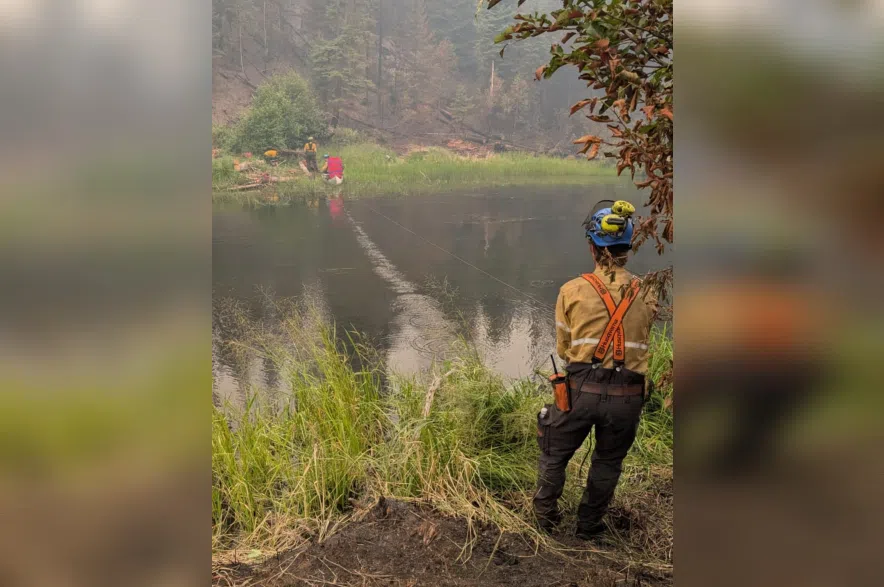An evacuation alert is now in effect for Ramsey Bay, including the Weyakwin Lake Recreation Site, due to the Buhl Fire.
According to Prince Albert National Park and Parks Canada, visitors and residents are not required to leave yet, but should be prepared to evacuate on short notice.
Parks Canada said establishing a dozer line south of Ramsey Bay was a top priority to limit threat to the community. The fire is approximately eight km away.
Montreal Lake Cree Nation issued an evacuation order for priority one and two residents on July 13, due to wildfire smoke in the community.
Prince Albert National Park is still on a pre-evacuation alert. Elk Ride and McPhee Lake do not currently have any alerts or orders in effect.
Read more:
- Heavy weekend rain didn’t do much for Sask. wildfires, SPSA reports
- Why a lawsuit about government response to Sask. wildfires isn’t going ahead
- Saskatoon sets new record for wildfire smoke as experts say the haze is here to stay
The Buhl Fire was caused by a lightning strike on June 29.
So far, it has currently burned 11,152 ha within Prince Albert National Park boundaries and 50,006 ha of provincial Crown land.
A number of resources are being used to battle the blaze, like 144 personnel, not including additional SPSA support staff, 10 helicopters, nine pieces of heavy equipment and access to additional air support as needed, including water tankers.
Sask. minister sent letter asking for aid
The province has asked for assistance from the federal government to battle the blazes.
Corrections, Policing and Public Safety Minister Tim McLeod sent a letter to the Federal Minister of Emergency Management and Community Resilience and Public Safety, Eleanor Olszewski.
He’s requesting up to 300 Type 3 fire personnel, medium and intermediate helicopters for bucketing and crew movement, value protection kits and water haulers for assisting with wildfire mop up and fire mitigation.
Fires in Saskatchewan on July 23
As of 21.30 p.m. on Wednesday, 55 active wildfires burned in Saskatchewan.
Fifteen of those blazes were not contained, with another 18 under ongoing assessment and firefighters were protecting values in another 18. Four fires were considered contained.
Contained means suppression action is taking place and the fire is not expected to grow in size, ongoing assessment means the fire is being monitored regularly to assess risk to values in the area and not contained means suppression action is taking place but the fire is expected to grow in size, according to SPSA. Protecting values means a fire is active and action is focused on protecting things like cabins and infrastructure.
Notable fires not contained included the Shoe Fire near Lower Fishing Lake, Pisew Fire west of La Ronge, the Wolf Fire west of Denare Beach, the Ditch Fire north of Weyakwin, the Muskeg Fire north of La Plonge Indian Reserve and Beauval, the Buhl Fire West of Weyakwin and the Trail Fire west of Beauval.
By far the biggest of those is the Shoe Fire, which was first reported on May 7 and on Monday was listed as 554,667 ha, or just over 1,370,612 acres, which is around 10 times the size of the entire City of Saskatoon area.
As well as the provincial ban, fire bans are active in 20 urban municipalities, 29 rural municipalities and five provincial parks in the province.
So far this year, there have been 392 wildfires in Saskatchewan. The five-year average is 315.











